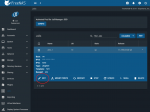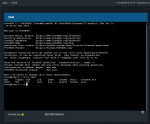jonmayer
Cadet
- Joined
- Jan 20, 2017
- Messages
- 9
Also, could you explain what the
[plex_drm=5] means in the /etc/devfs.rules ? Is plex_drm the iocage name? is the 5 the jail-ID?
The 5 refers to the ruleset number. If you go into your jails setup (hitting edit like below), there is a set of options under Jail Properties. the top most option is the devfs_ruleset. You can set this to a different number, but my experience was that it was always set to 5 (I only mentioned that offhand of my frustration, it may work perfectly for you as a different value).

From the FreeNAS shell you can check with a command:
iocage get devfs_ruleset <<your jail name>>. Anyway, loading the right ruleset is what allows the system to pass /dev/dri and /dev/drm to the jail. Passing this access on allows the jail to use the hardware. Whatever you can get to work, the number should match whatever value you give in /etc/devfs.rules which was labeleed [plex_drm=5] in my original post. This is easily verified by using ls /dev from the jail's shell. Like in my image, you should see dri and drm both listed.
If you have drm and are missing dri, I found this from loading just the drm module and not the i915kms mod (I've read that there is also a different i915kms.ko depending on a newer or older CPU. If you have issues try loading just
i915kms.ko instead of /boot/modules/i915kms.ko). If the user has been added to the right group, the multimedia driver installed, and these entries show up in /dev you should be good to go. Just remember to check the hardware encoding box in Plex as well.You mentioned having a Kaby Lake processor. I've heard good things about the hardware encoder in these chips, so good luck. Mine looks like it has "extra jpeg" when viewed on anything larger than a phone. Although the load being roughly halved was nice.
Last edited:


